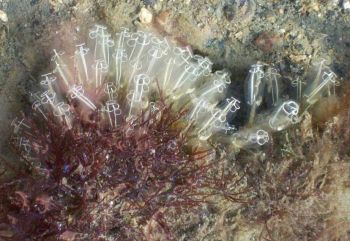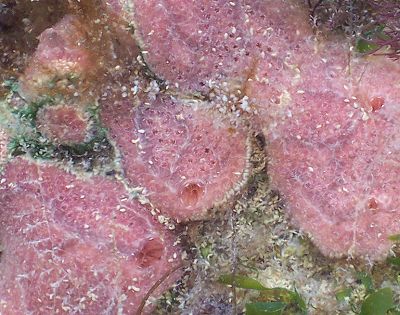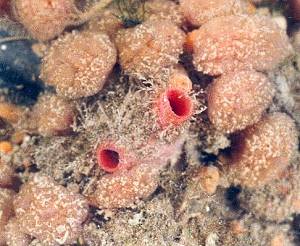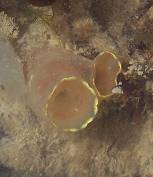
Sea Squirts Under Langstone Bridge
At low tide, water remains around the bottom of the bridge supports. These pools are home to Japanese Sea Squirts, Styela clava which arrived on shipping after the Korean War (1950-53).
Small groups of Light-bulb Sea Squirts, Clavelina lepadiformis , pictured right, can be found in the summer. There are various other species, some solitary and others forming colonies. The names given here are very much best guesses.


On the left is Sidnyum elegans, and on the right is Baked Bean sea squirt, Dendrodoa glossularia, almost hidden by the growth of hydroids.
It is surrounded by a colonial sea squirt Morchellium argus, clusters of orange and white balls.
Sea squirts and sponges can be remarkably similar in form, although they are fundamentally different. This is said to be an example of convergent evolution.

The sea squirt on the right has distinctive yellow rims on the siphons. It is probably a young specimen of Ciona intestinalis.
There is also a second page on sea squirts.
Back to Langstone Bridge Back to Sites



